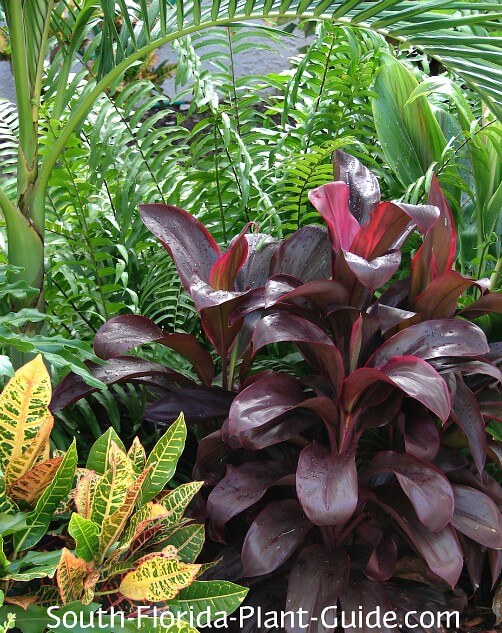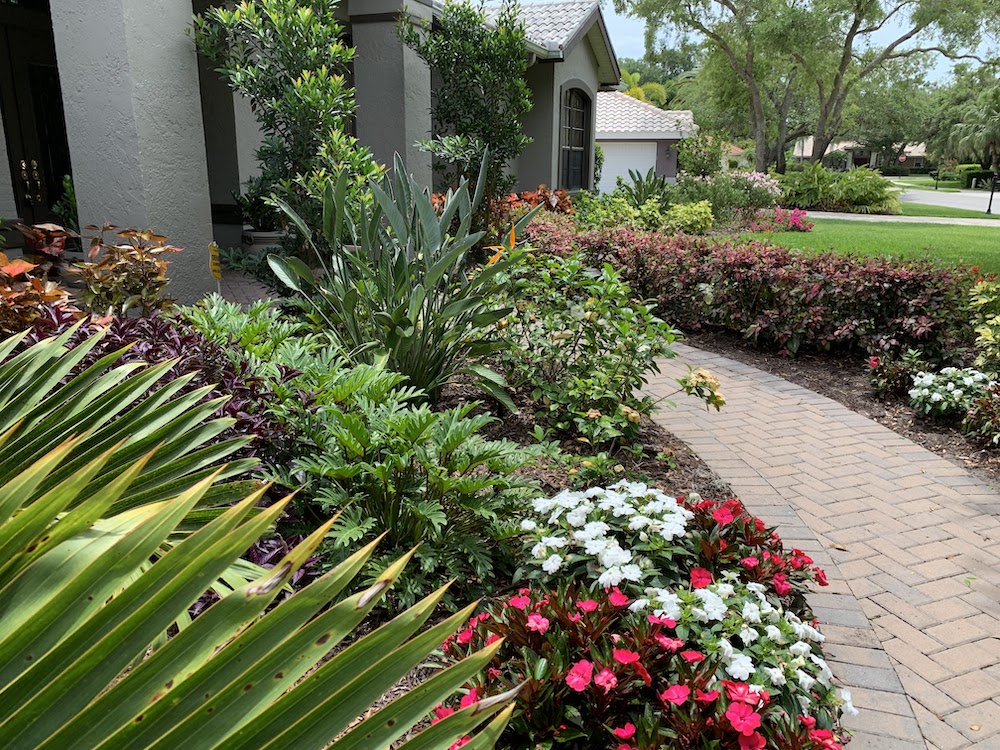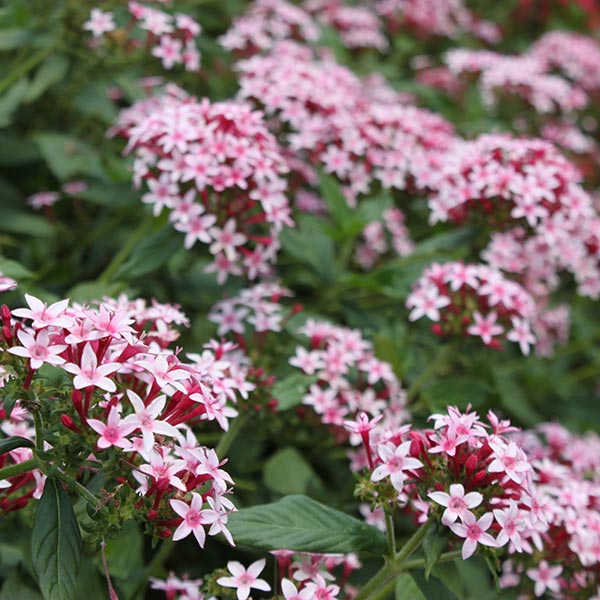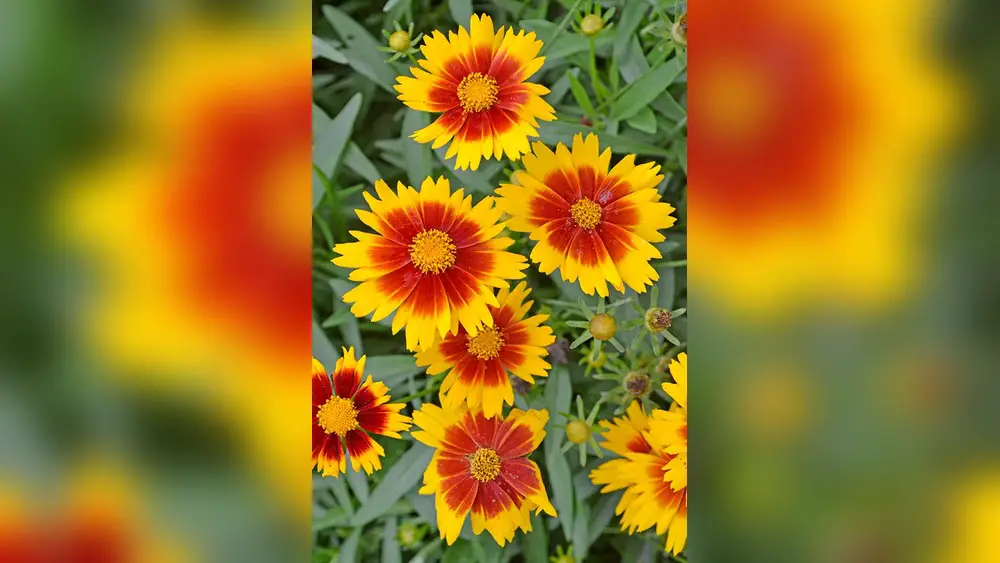If you want your flower beds in Florida to burst with vibrant colors and thrive all year round, choosing the right plants is key. Florida’s unique climate can be tricky—hot sun, high humidity, and occasional heavy rains mean not every flower will flourish.
But don’t worry, you can create stunning flower beds that are both beautiful and low-maintenance. In this guide, you’ll discover the best plants that love Florida’s weather, bloom continuously, and attract butterflies and hummingbirds to your garden. Ready to transform your outdoor space into a colorful paradise?
Keep reading to find out which plants will make your flower beds the envy of the neighborhood.
Florida Climate And Garden Conditions
Florida’s climate shapes every garden choice. The state offers warmth, moisture, and sunshine almost all year. Gardeners must understand these conditions to pick the best plants for flower beds. Each factor, from heat to soil, plays a role in plant health and bloom quality.
Heat And Humidity
Florida experiences high heat and humidity most of the year. Temperatures often rise above 90°F in summer. This warmth helps tropical plants thrive but can stress others. High humidity keeps moisture in the air, which can cause fungal diseases. Plants that handle heat and moisture well perform best in flower beds.
Soil Types
Soil varies across Florida, from sandy to clay-heavy. Sandy soil drains quickly but lacks nutrients. Clay soil holds water but drains slowly, sometimes causing root problems. Many native plants adapt well to these soils. Amending soil with organic matter improves texture and nutrient content for better plant growth.
Rainfall Patterns
Florida has a wet and dry season. The wet season runs from May to October, bringing heavy rains and storms. The dry season lasts from November to April with less rain. Plants in flower beds need to survive heavy rains and occasional droughts. Choosing water-tolerant and drought-resistant plants helps maintain healthy gardens year-round.

Credit: www.south-florida-plant-guide.com
Native Plants For Florida Flower Beds
Native plants bring natural beauty and resilience to Florida flower beds. They thrive in local soil and weather. These plants attract pollinators and support wildlife. Choosing native plants reduces water and maintenance needs. Below are some great native options for vibrant flower beds.
Goldenrod
Goldenrod adds bright yellow blooms to any garden. It flowers in late summer and fall. This plant attracts bees and butterflies. Goldenrod grows well in sunny, dry spots. It helps prevent soil erosion and needs little care.
Swamp Sunflower
Swamp Sunflower features large, cheerful yellow flowers. It thrives in wet or swampy areas. This plant blooms from summer to fall. It attracts butterflies and birds to your garden. Swamp Sunflower tolerates heat and occasional flooding.
Muhly Grass
Muhly Grass offers soft pink or purple plumes. It grows in clumps and adds texture to flower beds. This grass tolerates drought and poor soils. Muhly Grass provides shelter for small wildlife. It blooms in late summer and fall.
Milkweed
Milkweed supports monarch butterflies by providing food and habitat. It has clusters of pink, orange, or white flowers. Milkweed blooms in spring and summer. This plant prefers full sun and well-drained soil. It is essential for pollinators and easy to grow.
Low-maintenance Flowers
Low-maintenance flowers are perfect for Florida flower beds. They need little water and care. These plants thrive in heat and humidity. They bloom for long periods, brightening gardens with minimal effort. Choose flowers that resist pests and diseases. This saves time and money. Here are three excellent options for easy-care Florida flower beds.
Pentas
Pentas are vibrant and hardy flowers. They produce clusters of star-shaped blooms in red, pink, lavender, or white. Pentas attract butterflies and hummingbirds. These flowers bloom almost all year in Florida. They prefer full sun but tolerate some shade. Pentas need watering only during dry spells. Their continuous blooms make them a garden favorite.
Vinca
Vinca, also called periwinkle, is drought-tolerant and tough. It blooms nonstop in Florida’s warm climate. Vinca has glossy green leaves and flowers in colors like pink, white, and purple. It grows well in sun or partial shade. This plant requires very little water once established. Vinca is resistant to pests and diseases, making it perfect for busy gardeners.
Lantana
Lantana is heat-tolerant and nearly indestructible. It produces clusters of small flowers in bright shades of yellow, orange, red, and pink. Lantana attracts pollinators like bees and butterflies. This plant thrives in full sun and well-drained soil. It needs little watering and can survive dry periods. Lantana adds vibrant color with very low upkeep.
Year-round Bloomers
Year-round bloomers bring constant color to Florida flower beds. These plants flourish in Florida’s warm, sunny climate. They keep gardens lively through all seasons. Choosing them ensures your flower beds never look dull. These plants are easy to care for and reliable bloomers.
Hibiscus
Hibiscus plants offer large, bright flowers nearly all year. Each flower lasts only a day but blooms continue nonstop. They thrive in Florida’s heat and humidity. Their tropical look adds a bold splash of color. Plant hibiscus in well-drained soil with full sun exposure.
Roses
Roses bloom almost year-round in Florida’s mild climate. Select heat-tolerant varieties for the best results. They bring classic beauty and a sweet fragrance. Roses need regular watering and good air circulation. Prune them to encourage fresh blooms and healthy growth.
Geraniums
Geraniums are bright, cheerful flowers that bloom continuously. They handle Florida’s heat well and tolerate dry spells. Geraniums grow best in sunny locations with well-drained soil. Deadheading spent flowers helps maintain constant blooming. They add vibrant color to any flower bed.
Mexican Petunia
Mexican Petunias are tough plants with striking purple flowers. They bloom from spring through fall and sometimes year-round. These plants tolerate heat, drought, and poor soil conditions. Mexican Petunias spread easily and fill beds with color. They attract butterflies and require minimal care.
Drought-tolerant Choices
Drought-tolerant plants save water and survive Florida’s dry spells. These plants thrive with little irrigation. They keep flower beds colorful and healthy through hot, dry weather. Choosing drought-resistant plants helps conserve water and reduce garden care. Here are some excellent drought-tolerant options for Florida flower beds.
Blanket Flower
Blanket Flower is a bright and hardy perennial. It produces red and yellow daisy-like blooms. This plant grows well in sandy, dry soil. Blanket Flowers attract butterflies and bees to your garden. They require minimal water once established. Their long bloom season adds color from spring to fall.
Coral Honeysuckle
Coral Honeysuckle is a vigorous vine with tubular red flowers. It thrives in full sun and dry conditions. This plant is great for covering fences or trellises. Coral Honeysuckle attracts hummingbirds and pollinators. It tolerates drought and poor soil. Its bright blooms bring vibrant color to any flower bed.
Lantana Varieties
Lantana is a tough, drought-tolerant shrub that blooms profusely. It comes in many colors like yellow, orange, pink, and red. Lantana thrives in hot sun and dry soil. It attracts butterflies and other pollinators. This plant requires little water once established. It provides year-round color in Florida gardens.
Attracting Pollinators
Pollinators play a key role in healthy flower beds. They help plants reproduce and boost garden growth. Attracting pollinators like hummingbirds and butterflies makes your flower bed lively and colorful. Choosing the right plants invites these helpful visitors to your Florida garden.
Flowers For Hummingbirds
Hummingbirds love bright, tubular flowers with plenty of nectar. Plant species like Coral Honeysuckle and Firebush to attract them. These flowers provide easy access to nectar and vibrant colors that catch hummingbirds’ attention. Also, consider native plants like Salvia and Trumpet Creeper. They thrive in Florida’s climate and keep hummingbirds coming back.
Butterfly-friendly Plants
Butterflies seek out flowers with flat tops for landing and easy nectar access. Milkweed is a top choice for attracting butterflies in Florida. It also supports caterpillars, the butterfly larvae. Other good options include Lantana and Pentas. These plants bloom in clusters and offer plenty of nectar. Planting a mix of these flowers helps create a butterfly-friendly garden all season long.
Planting And Care Tips
Proper planting and care boost the health and beauty of flower beds. Understanding the needs of Florida’s climate helps plants thrive. Follow simple steps to prepare soil, water correctly, fertilize, and manage pests. These tips support strong growth and vibrant blooms all year.
Soil Preparation
Start with well-draining soil to avoid waterlogging. Loosen the soil to about 12 inches deep for roots to spread. Mix organic matter like compost to improve fertility and texture. Test soil pH and adjust to 6.0–7.0 for most flowers. Good soil helps plants absorb nutrients efficiently.
Watering Needs
Water plants deeply and less often to encourage strong roots. Early morning watering reduces evaporation and fungal diseases. Check soil moisture before watering again. Avoid overwatering, which can cause root rot. Use mulch to keep soil moist and cool during hot days.
Fertilizing
Use a balanced fertilizer to supply essential nutrients. Apply fertilizer during the growing season for best results. Follow package instructions to avoid overfeeding plants. Slow-release fertilizers provide nutrients over time. Healthy plants produce more flowers and resist stress.
Pest Management
Inspect plants regularly for signs of pests or damage. Use natural predators like ladybugs to control harmful insects. Remove affected leaves to stop spread. Choose pest-resistant plant varieties when possible. Apply insecticidal soap or neem oil for severe infestations.

Credit: tropicalgardenslandscape.com
Combining Plants For Vibrant Beds
Creating vibrant flower beds in Florida requires a thoughtful mix of plants. Combining different species can bring life, color, and texture to any garden space. A well-planned flower bed captures attention and adds charm to your outdoor area.
Choosing plants that complement each other enhances the overall beauty. Careful selection helps maintain interest throughout the year. Below are key points to consider for combining plants successfully.
Color Coordination
Select colors that work well together to create harmony. Use warm colors like reds, oranges, and yellows to create energy. Cool colors such as blues, purples, and greens add calmness. Mixing bold colors with soft pastels can offer balance. Group plants with similar hues or contrast shades for impact. Repeating colors across the bed ties the design together.
Height And Texture
Varying plant heights add depth and dimension to flower beds. Tall plants can serve as a backdrop or focal point. Medium-height plants fill the middle space for fullness. Low-growing plants create a neat border or ground cover. Textures also matter—combine smooth leaves with rough or spiky ones. This contrast makes the bed more interesting to the eye.
Seasonal Variety
Include plants that bloom at different times for year-round color. Spring blooms welcome the new season with fresh vibrancy. Summer flowers thrive in Florida’s heat, adding bright splashes. Fall blooms bring warm tones and lasting beauty. Winter-flowering plants keep the bed alive when others rest. Planning for seasonal changes keeps the flower bed lively and attractive.

Credit: costafarms.com
Frequently Asked Questions
What Is The Best Low-maintenance Landscape In Florida?
The best low-maintenance landscape in Florida features native plants like goldenrod, swamp sunflower, muhly grass, and milkweed. Rain gardens control water naturally and thrive with minimal care. These Florida-friendly plants resist drought and pests, ensuring easy upkeep and vibrant, sustainable beauty year-round.
What Is The Easiest Flower To Grow In Florida?
Pentas is the easiest flower to grow in Florida. It blooms nonstop and thrives in heat with minimal care.
Are There Flowers That Bloom All Year In Florida?
Yes, flowers like Vinca, Pentas, Hibiscus, Roses, and Geraniums bloom year-round in Florida’s warm climate. These plants provide continuous color with proper care.
What Is The Best Low-maintenance Ground Cover In Florida?
Asian jasmine is the best low-maintenance ground cover in Florida. It thrives in heat, tolerates drought, and resists pests.
Conclusion
Choosing the right plants makes flower beds thrive in Florida’s heat. Native and low-maintenance plants save time and water. Plants like Pentas, Hibiscus, and Lantana offer bright colors all year. They attract butterflies and hummingbirds, adding life to your garden.
Remember to pick plants that suit your soil and sunlight. With simple care, your flower beds will bloom beautifully. Enjoy a colorful, easy-to-grow garden in Florida’s unique climate.

